NSF Research Traineeship (NRT)
Past practicum projects:
2017-18 Traineeship
Students participated in a one-semester course consisting of three one-month long modules, entitled "Methods In Data- Enabled Research Into Human Behavior And Its Cognitive And Neural Mechanisms." This year consisted of the following
- Probabilistic (often Bayesian) Models of Human Perception and Cognition taught by Professor Robert Jacobs. In particular, we used probabilistic models to develop so-called "ideal observers" which perform a perceptual or cognitive task. The task can also be performed based on the task inputs, task constraints, and modeling assumptions built into the observer. Through three programming projects, students gained hands-on experience implementing probabilistic ideal
observers, and comparing observers' performances with human performances. - Inference Implementation in the Brain taught by Professor Ralf Haefner. Simulating a simple biophysical model of an individual neuron, students showed how neurons can support linear-nonlinear operations that are at the core of deep neural networks in machine learning (programming assignment 1). Both learning and inference in such a model using an MCMC- sampling-based algorithm gives rise to a neural network (in the biological sense) with neural response properties similar to those found neurophysiologically (programming assignment 2).
- Language Processing taught by Professor James Allen. This module included general background on the structure of language, an introduction to basic statistical methods used for a variety of language applications (e.g., part of speech tagging), and an overview of semantics, semantic parsing
and natural language dialogue/systems.
The following semester, the students participated in "Practicum In Data-Enabled Research Into Human Behavior And Its Cognitive & Neural Mechanisms". In this course, trainees work in mixed teams of CS and BCS
Bios of the 2017-18 Class Members
 | Wednesday BushongI'm a third year Website Project contributions: Our group of brain and cognitive sciences and computer science students investigated whether introducing visual information about the face aids in speech perception in humans and neural networks. I contributed to the experimental side, designing and running experiments to test how visual information changes speech perception in humans and I compared this to how visual information aided speech perception in neural networks. What did I learn from the course? The biggest takeaway for me was the ability to collaborate, especially with people who have very different skillsets. How might this course affect my career? As I mentioned, I felt teamwork and collaboration skills were the main benefit of the course and will have a very positive impact on my career as I collaborate more with researchers outside of my subfield. The computational skills I learned from the first part of the course are also applicable to my research and to current industry standards if I decide to leave academia.
UPDATE June 2020: Wednesday Bushong completed her PhD and will be starting a tenure-track faculty position at University of Hartford as an Assistant Professor of Psychology. |
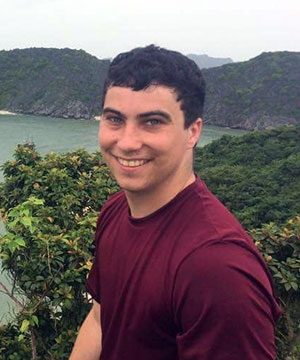 | Sam CheyetteI graduated from Carnegie Mellon in 2016 with a BS in cognitive science. I'm now a brain and cognitive sciences Project contributions: I was involved in numerous projects, but my favorite was probably developing a tool to integrate speech with lip-reading. At What I learned: On a "factual" level, I learned a lot of How it might affect my career: Many of the machine learning tools that I learned in this class are widely used or becoming widely used in my field. Having some experience with those tools will certainly be useful. Greatest challenge: Working with many other people towards an ambitious goal can be frustrating (and rewarding). It's tough trying to keep everyone in a team on the same page and motivated toward a common purpose.
|
 | Joseph GermanJoseph is a first-year Project contributions: In addition to representing Linux systems in the data exploration and analysis, I raised a number of methodological issues with the experimental design and statistical analysis of fMRI. What did I learn from the course? The course was a great overview of the strengths and limitations of fMRI, both technical and philosophical. Any cognitive scientist, whether they plan to work with fMRI or not, needs to know how to properly interpret the results. The course also covered basic tools to streamline the analysis of neuroimaging data. How might this course affect my career? fMRI is one of the most powerful experimental tools at our disposal. Knowledge of neuroimaging techniques, including both their strengths and limitations, is essential for any cognitive scientist. What was surprising or the greatest challenge? Often, more sophisticated-seeming approaches to analyzing fMRI data that take certain subtleties of experimental design into account perform no better than more basic techniques that ignore those complexities. |
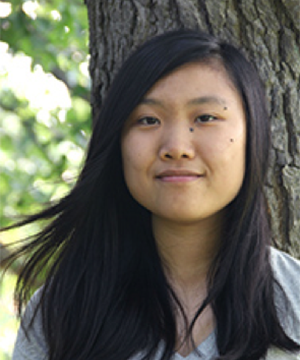 | Lisa JinLisa is a second-year computer science What did I learn from the course? I gained insight into statistical models of human cognition, neuroscience, and natural language. How might this course affect my career? Learning about the interplay between multiple levels of brain function and human reasoning showed me how AI is shaped (and limited) by biological ideas. I will look into these domains for Updates since the class ended:
|
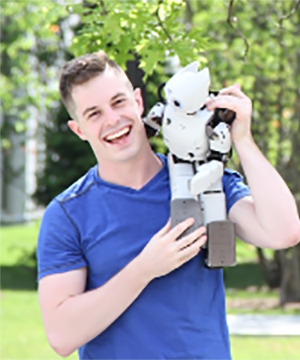 | Nathan KentNathan Kent is a second year Website What did I learn from the course? The things I found to be the most interesting were the subtle differences between doing research as a student in brain and cognitive sciences and doing research as a student in computer science. The final project was an interesting exercise in crossing that gap. How might this course affect my career? This course provided me with the opportunity to make contacts in another department that I may not have made otherwise. Hopefully, I will be able to use this experience to work with the BCS department in the future. What was surprising or the greatest challenge? The writing workshops. The difference between the workshops in the first year and the second year seemed like night and day. I did not expect them to be as useful and interesting as they were. Updates: Since the class ended, I have attended the Epirob 2017 and RSS 2018 conferences.
|
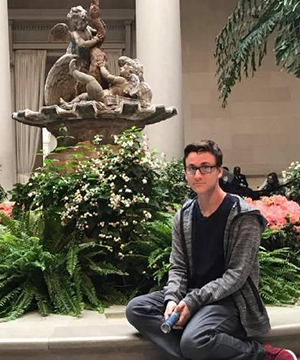 | Samuel LermanI’m a second-year Personal Webpage Project contributions: Broadly speaking, I contributed to medical predictive modeling using biologically inspired, novel neural network architectures (and hopefully it worked, but we are still building them!) What did I learn from the course? I learned about the methods and popular mathematical and medical tools used to study the brain, such as Bayesian modeling and fMRI. How might this course affect my career? This course will consolidate the cognitive aspect of my research focus in my career, allowing me to understand and investigate neuroscientific perspectives with more aptitude. What was surprising or the greatest challenge? The greatest challenge was the overwhelming amount of uncertainty challenging researchers in both fields. There was difficulty in estimating which discoveries and observations were |
 | Parker RileyParker is a second-year computer science Project contributions: Parker primarily worked on the face detection and facial feature extraction components. What I learned: "This course was an excellent way to form interdisciplinary connections and get a broader perspective on research in the field." Career impact: "With the recent boom in deep learning, getting familiar with it early on in the program is an excellent way to be set up for success after graduation." Surprise/challenge: "I was most surprised to see how much work there is happening in other fields that can be applied to my own; we need programs like this to increase cross-disciplinary communication." Updates since participation: I attended ACL 2017, presented published work at ACL 2018 (both trips with support from the NRT), and interned at Google in New York City.
|
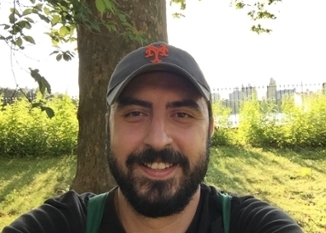 | Berhan SenyazarBerhan Senyazar is a first-year PhD student in the Brain and Cognitive Sciences department advised by Robert Jacobs. His main research interests are the computational and information theoretic limitations of cognitive functions and how they are organized to work effectively under such restrictions. He received his MA in Cognitive Science and his BSc in Computer Engineering from Bogazici University, Istanbul, Turkey. What did I learn from the course? I learned how to think about cognitive and neuroscientific phenomena in terms of basic computational terms, model their workings using advanced statistical and computational methods, and test the validity of the models with appropriate behavioral and neuroimaging experiments. How might this course affect my career? I gained the right perspective to mathematically model and analyze real-world data. This is not only a fundamental skill for academic research but also for industry with the increasing importance of data science. What was surprising or the greatest challenge? Even though I have a multi-disciplinary background, the greatest challenge was to learn the strategies to communicate my research to a diverse group of scientists. |
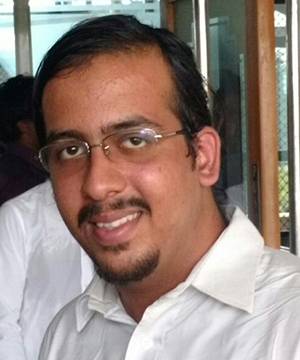 | Sabyasachi (Sabya) ShivkumarSabyasachi (Sabya) Shivkumar is a first year CV What did I learn from the course? The course gave me a unique chance to study topics in neuroscience and computer science with a highly interdisciplinary cohort. This led to a lot of discussions which provided a new perspective in studying these ideas. |
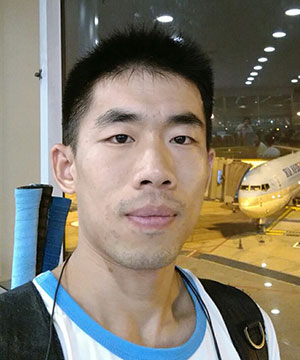 | Bin YangBin Yang is a first year Current CV What did I learn from the course? I learned a lot about statistical and computational approaches such as Bayesian Inference and LNP model, and their applications to How might this course affect my career? This course introduced me to computational neuroscience, which will be a key part of my future research career. What was surprising? People talked about Bayesian Inference all the time. However, it is hard for me to believe that we are just behaving as Bayesian decoders, as hard as it is for me to say anything against this idea! |
